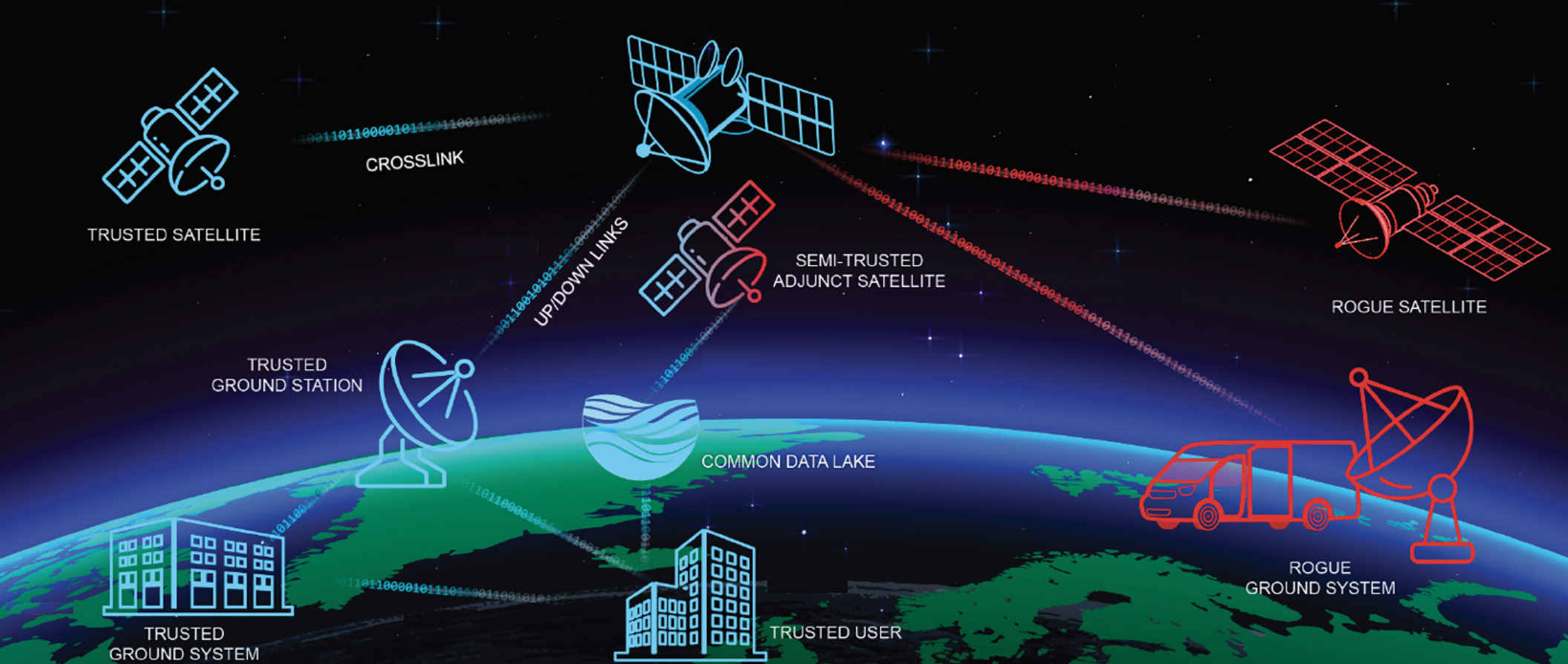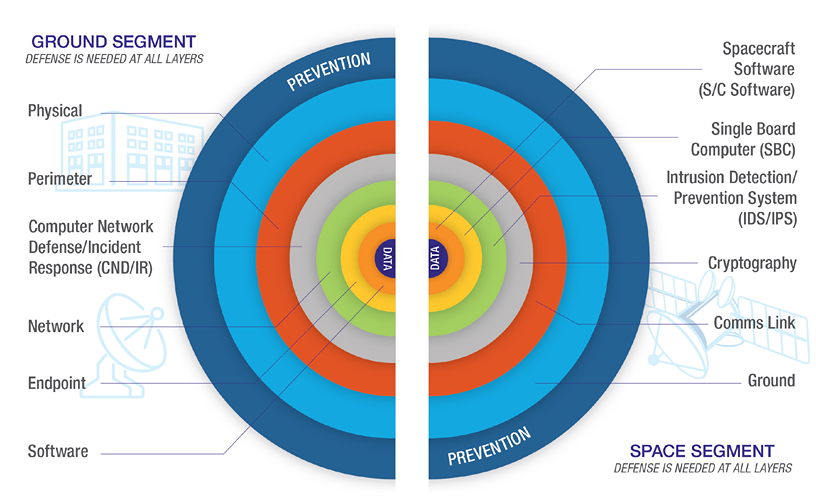Defense-in-Depth for Space Systems
Historically, spacecrafts have been considered relatively safe from cyber intrusions; however, recent activity has shown that the spacecraft itself is in the sights of our adversaries. While space centric cybersecurity standards and governance continue to lag behind, adoption of defense-in-depth-techniques for space systems will help ensure space systems are resilient to cyber intrusion.
The Aerospace Corporation's Space Attack Research & Tactic Analysis (SPARTA) explores the various techniques that an adversary may utilize in attacking space objects and the various countermeasures that those in the space community can utilize.
Below is an example depiction of cyber threat vectors for space systems. The blue lines indicate normal expected communications and access while the red lines indicate communications from adversary's infrastructre directly.

Space systems should have cybersecurity protections applied to both the ground and space segments. By applying a defense-in-depth strategy, security controls should be applied at the user segment, ground segment, link segment, and space segment to ensure the space system has a robust security architecture.
Below are the various Defense-in-Depth layers for Space Systems. The outer layer, prevention, is where protection such as governance, supply chain protection, and risk management occur. The inner layers are where the mission data and the flight software reside with protections such as encryption and software assurance to reduce risk.
Click on each layer within the image to explore the sub-layers and goals for all.

